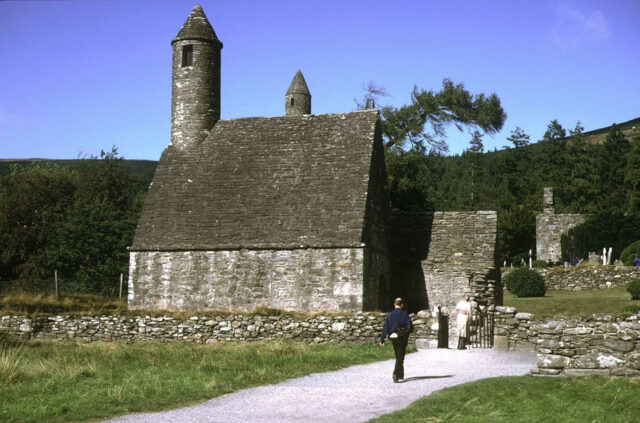
We live in a noisy world. I’m not just talking about rush hour traffic or the planes that make an approach to the Philadelphia airport far above my head at night.
I’m talking about the noises that occupy our minds due to our cell phone addictions, social media impact, the endless news cycle and mean-spirited online remarks.
One morning, a sixth-century Irish monk reminded me to make an effort to quiet this barrage. I knew nothing about St. Kevin, the founder of Glendalough monastery in a lush valley in County Wicklow near Dublin.
But I follow Eric Clayton on the website www.jesuits.org. He writes and podcasts in a refreshing and personal way about Ignatian spirituality. One morning recently, he explained in his AMDG: A Jesuit Podcast why a statue he had once seen of St. Kevin holding a nest of blackbird eggs intrigued him. The statue was dedicated to a treasured mentor of Clayton’s. But what exactly was the connection?
On a recent trip to Ireland, Clayton wanted to learn about St. Kevin, whose monastery is a principal Irish pilgrimage site. Fortunately for him, Clayton had a ready guide in Jesuit Father Brendan McManus, an Irish author of books on spirituality and pilgrimage.
Traveling to Glendalough, the two explored the site of St. Kevin’s monastery. The pictures posted of the old stone remains, the many graves within it, and its beautiful surroundings are wonderful.
But so much about ancient saints is shrouded in legend and tradition. Like, for example, those blackbird eggs.
According to legend, St. Kevin was deep in prayer, lifting his open hands to God, when a mother blackbird laid her eggs in his hand. Because of his deep reverence for the created world, and his commitment to silence, the saint held the eggs until they hatched.
A silly story? Can’t possibly be true? Here’s where we get at the truth of something that may not be literally accurate but truthful on the deepest level. Kevin was a man who came to live in a cave, originally, where he committed himself to God, the God who lives in silence. The God who lives in the extraordinary beauty of the created world. The God who was calling Kevin to engender this silence in others through a monastery.
Remember the famous Scripture reading about Elijah, waiting for the visit promised by God (1 Kgs 19:12)? A violent wind erupts; but God wasn’t in the wind. There’s an earthquake. Then, there’s a fire. Surely, God must be speaking in all this noise?
But no, after this comes what some translations describe as a “still, small voice.” But in the translation given us by the U.S. Conference of Catholic Bishops, it’s “a light silent sound.”
There God speaks.
How can a sound be silent? I think it’s because silence speaks to the heart. God speaks in silence. You have to be listening quietly to hear a silent, wordless sound. To come into the presence of silence is to come into the presence of God. It’s prayer at its deepest.
Clayton’s mentor must have been a man known for leading people to silence, the goal of St. Kevin’s life.
The morning I learned about St. Kevin, I had a decision to make. I was flailing, praying, noisily and distractedly, with my own words. I decided to go to Mass, and to sit silently. Pushing thoughts away, giving them to God, is hard. But it brought me peace.
The noise of this world makes a home in our minds. God’s soft, silent sounds live in our hearts.
We all need more silence.
Effie Caldarola is a wife, mom and grandmother who received her master’s degree in pastoral studies from Seattle University.







